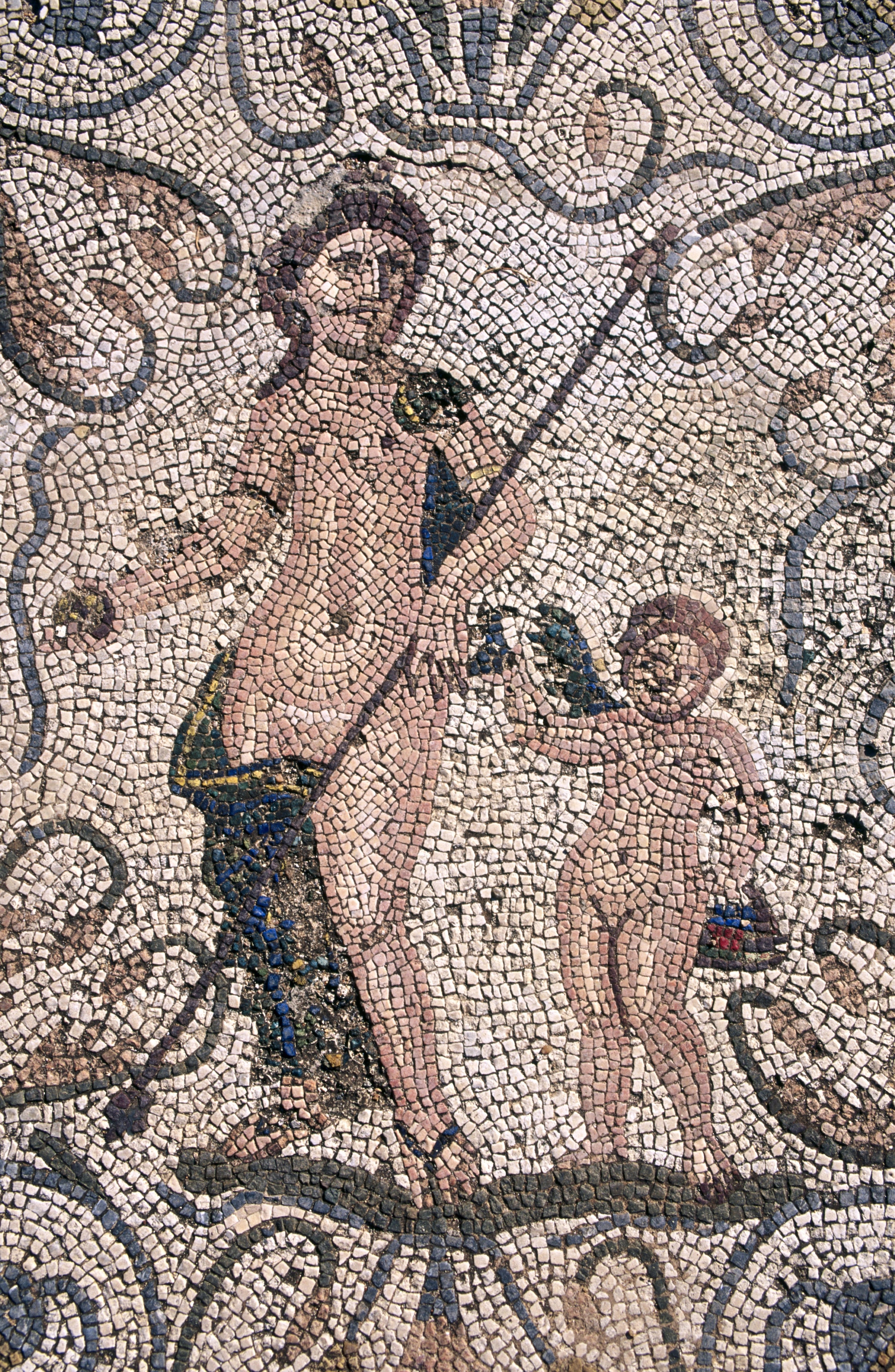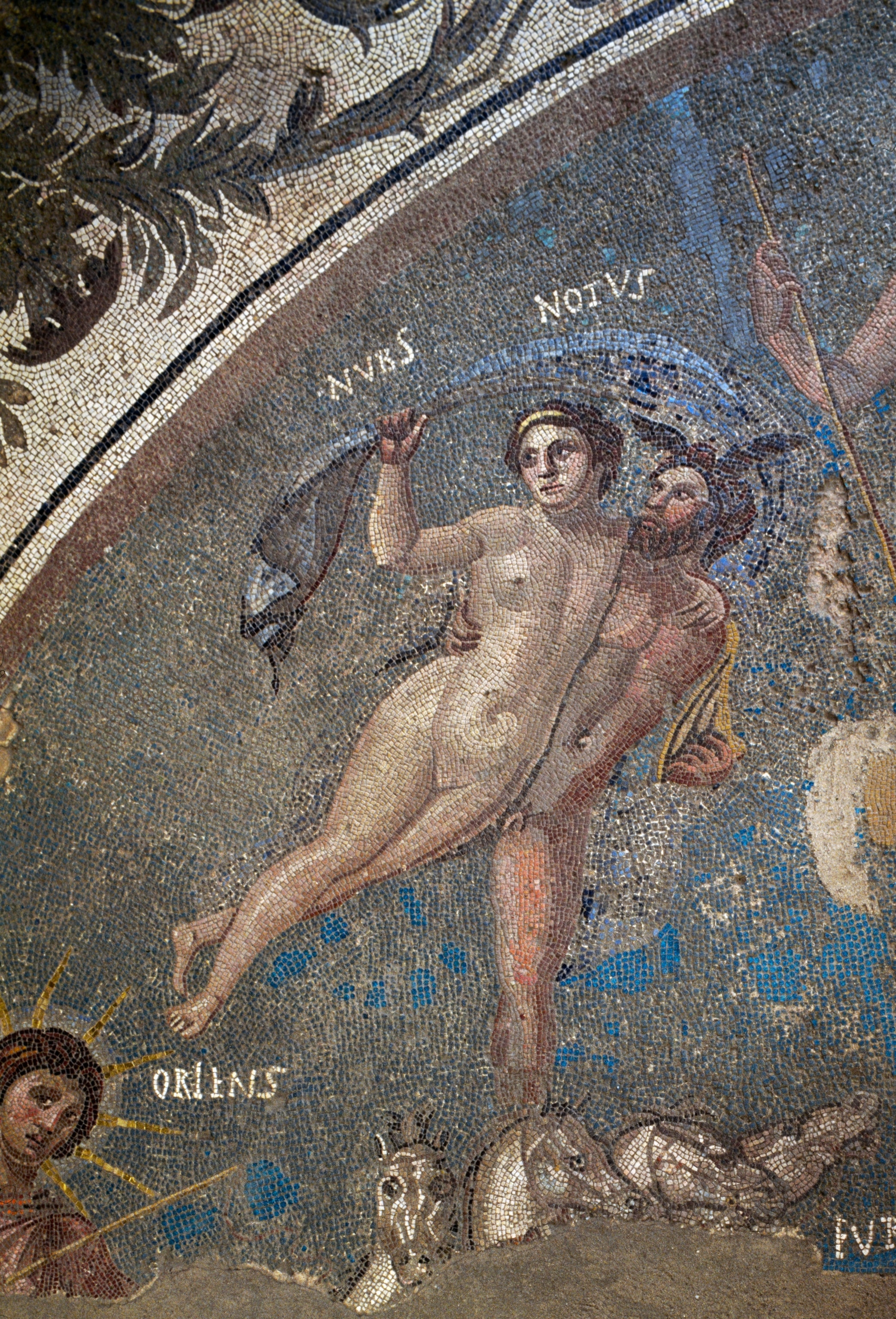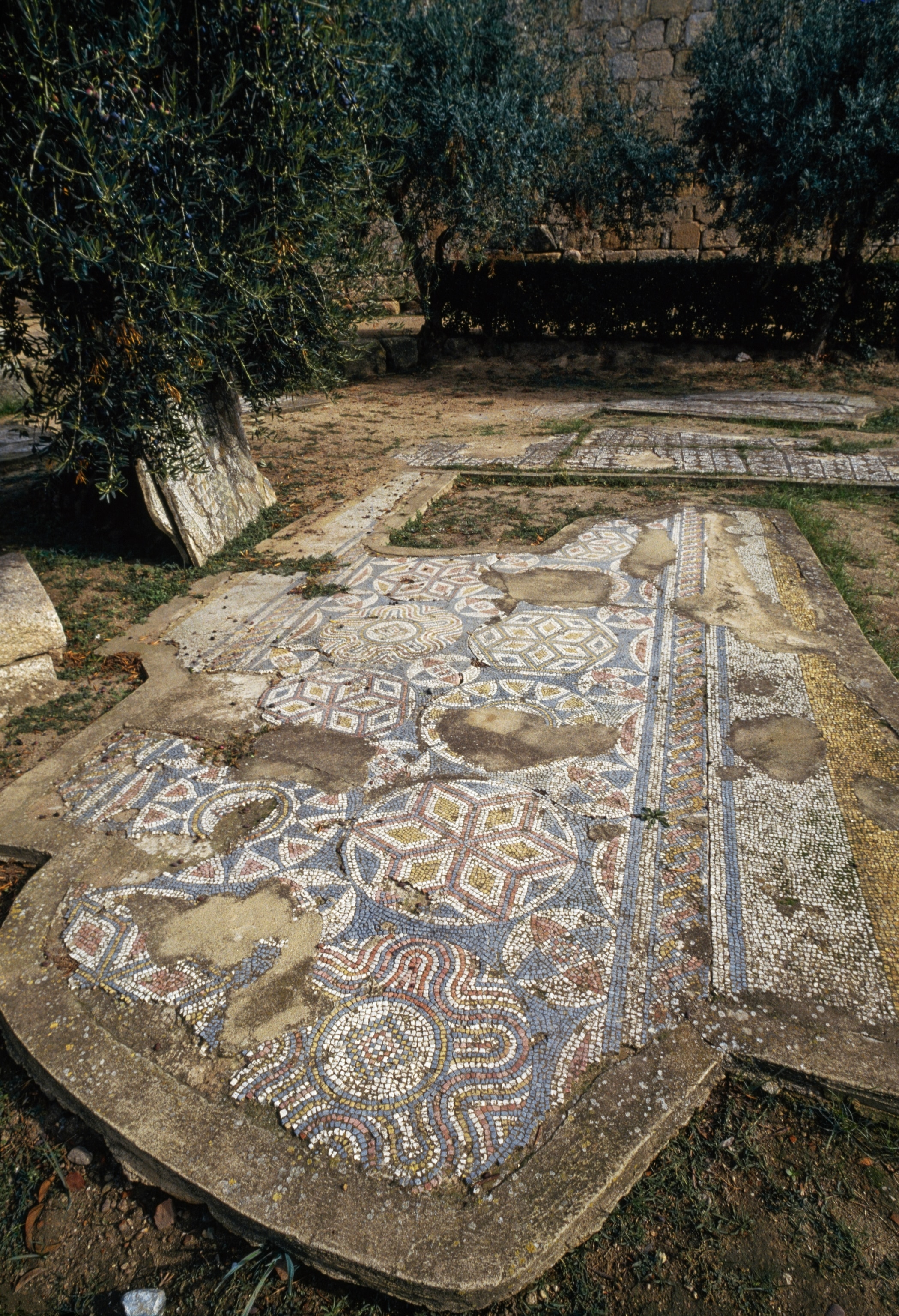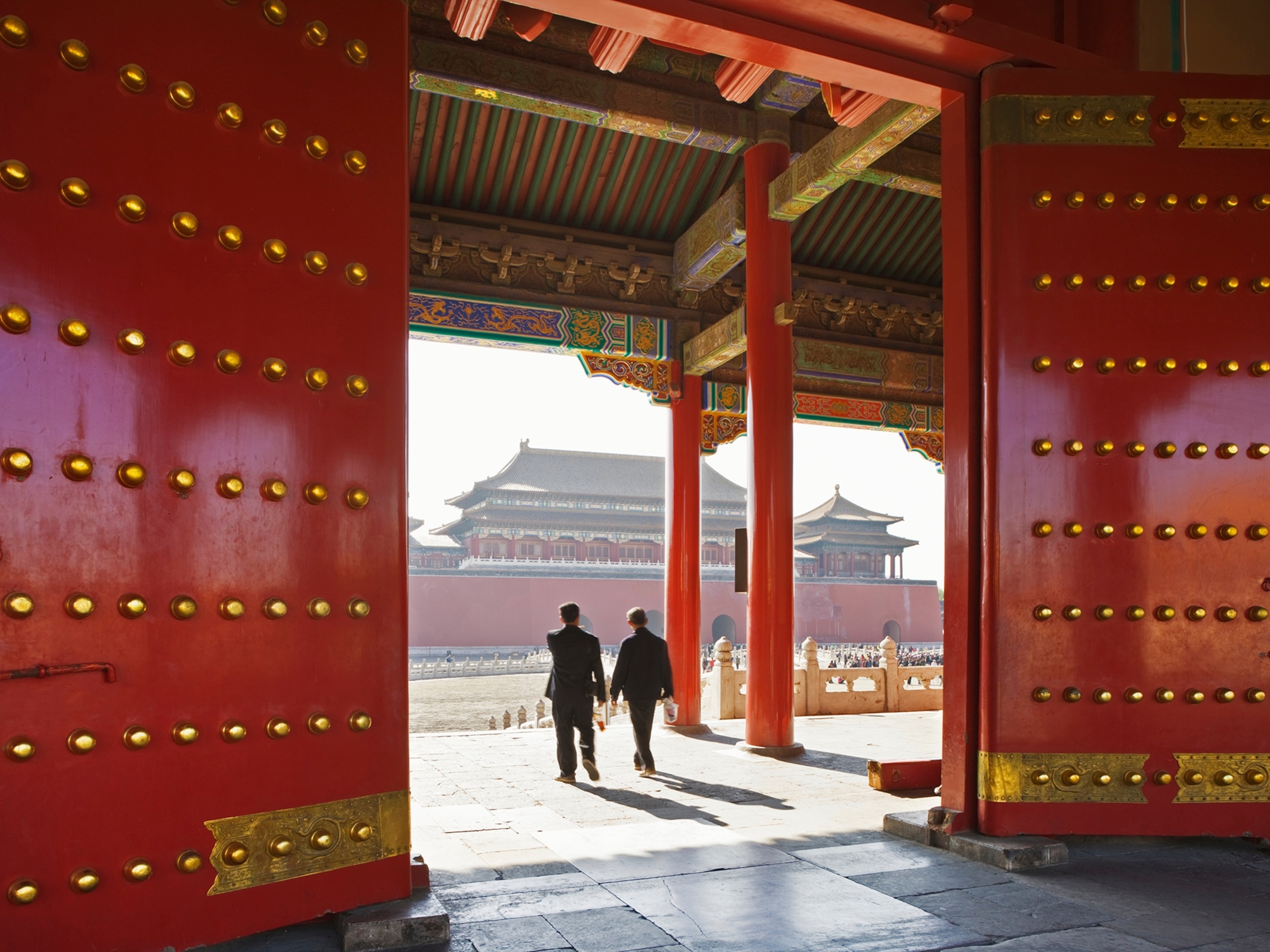
Find mosaics and mystery in an outpost of the Roman empire
This often-overlooked Spanish city is so rich in ancient treasures, skeletons of fifth century looters were found amid its ruins.
At its peak in the first century A.D., the Roman Empire covered portions of three continents, stretching north from the United Kingdom, south to Egypt, east to Syria, and west to Portugal. Of the 600-plus sites archaeologists know about, few offer a more complete and complex view of ancient Roman life than the remnants of Augusta Emerita, located in modern-day Mérida, Spain.
The UNESCO World Heritage site lies in Spain’s southwestern autonomous community of Extremadura, a largely rural region best known for sun-parched summers, dry-farmed crops, and the production of Iberian ham. What Mérida lacks in name recognition—it’s rarely spoken of in the same breath as Rome or Pompeii—it makes up for in its range of Roman structures. Sprinkled around 75 acres within the modern city are all the defining elements of an ancient metropolis: hydraulic works, bridges, fora, a theater, an amphitheater, a circus, homes, and necropolises.

“Mérida today offers a whole practical lesson in classical archeology,” says Trinidad Nogales Basarrate, director of the city’s National Museum of Roman Art. An impressive 2020 restoration of the ancient city’s largest house—and a continuing focus on balancing tourism and historic conservation—means travelers have new reasons to explore one of Spain’s oldest settlements.
A Roman capital rises and falls
Augusta Emerita was founded in B.C. 25 by the Roman emperor Augustus as a colony for soldiers, or emeriti, discharged during the Cantabrian War. The location near the Guadiana River was ideal, in a valley between sloping forests and fields of encina trees, the bark of which has long been used to produce cork. Augustus named Mérida the capital of Lusitania, a province that straddled the current-day borders of Portugal and Spain.
It also became the center of the imperial cult that worshipped emperors as gods. Evidence of the Roman rulers-as-deities movement include a veiled bust of Augustus as the Pontifex Maximus or supreme religious authority at the National Museum of Roman Art and the misnamed Temple of Diana in the city center. The latter—most likely erected during the reign of Augustus—is actually an Imperial Cult Temple which rises from a tall granite podium, its crumbling tympanum pointing skyward.
(Buried by Vesuvius, this Roman villa is a less-visited alternative to Pompeii.)
At its height, in the first and second centuries, Mérida attracted a population of 40,000, from as far as Asia Minor. It remained a strategic bastion and administrative capital up to the eighth-century Moorish occupation. But by the time of the Christian reconquest in the 12th century, the city was a historical footnote. Many of its “immoral” structures were backfilled to make way for farming and new construction.
Plenty of other Roman sites exist outside of Italy, including in neighboring Portugal, Morocco, and France. “In them, you may have an amphitheater or baths or an aqueduct,” says Marco Mangut, an Extremadura tour guide. “But finding a theater, amphitheater, and circus—the top three buildings for games—is extremely rare, except in Rome.”
Ancient meets modern
The notable ancient structures of Mérida, Spain’s least-populated and least-visited region, have been relatively easy to unearth. “If you go to Rome, the difference between the modern ground level and the ancient is about 10 meters. In Mérida, it’s not even half that. You could open a trench for a new fiber-optic cable and hit some Roman ruins,” says Jonathan Edmondson, professor of Roman history and classical studies at York University in Toronto, and coauthor of Si muero, no me olvides (When I Die, Do Not Forget Me), which examines the social life of Augusta Emerita via funerary epigraphs.
Within the modern city, visitors will stumble upon more than 30 monuments, from Roman to Christian, all managed by the Consortium of the Monumental City of Mérida. Regular archaeological finds and preservation projects mean there’s always something new to see.



The recently reopened Amphitheater House, the largest ancient dwelling in town, spotlights the life of well-to-do Romans. A new, 4,000-square-foot, fully accessible steel pathway winds just above the structure, with glass-floored platforms positioned over hallways and living spaces. The project also erected a roof to protect the house from the intense Extremadura sun.
“The Amphitheater House represents one of the most unique examples of Roman suburban dwellings that dotted the landscape surrounding the walls of Augusta Emerita,” says the Consortium’s Raquel Nodar Becerra, who oversaw the restoration with architect María López.
The largest Roman home in the city, the Amphitheater House holds 7,000 square feet of faded polychrome mosaics depicting gods, nature, and everyday life. The best-preserved ones decorate the dining room floor with scenes of Venus and Cupid framed by lush vegetation and a trio of men stomping grapes as little birds pluck at vines.
(Uncover the secrets of London’s Roman road.)
These stone mosaics aren’t just decorative; they provide clues about who lived here and what they were like, an Augustinian Architectural Digest of sorts. In the Mithraeum House, half a mile from the Amphitheater House, the brightly colored Cosmological Mosaic uses mythological figures to show the celestial, earthly, and marine realms and their elements, such as wind and water. “It suggests the owner of that house had some pretty interesting intellectual interests,” Edmondson says.

Mérida’s Roman Theater and Amphitheater, the second leg of a “triangle” formed with the Amphitheater House, are also impressively preserved. The Amphitheater’s stone benches, some eroded with age, surround an arena where gladiators battled. The theater has a columned proscenium that was once decorated with sculptures and a three-tiered seating system for the city’s different social classes. According to Mangut, the columns were so prized that archaeologists in the early 1900s unearthed the skeletons of fifth-century looters, hands clutching ropes affixed to their fallen prizes, who were trapped when the ceiling collapsed.
On the third leg of the triangle is the National Museum of Roman Art where classically inspired arcades with tall arches hold interpretive exhibits on Roman culture and about 3,000 artifacts (of a collection of 50,000). These include glass, coins, and a large stone medallion featuring the head of Medusa.
Nearby, the city’s massive Circus held 30,000 spectators for ceremonial processions and chariot races, including some featuring Gaius Appuleius Diocles. Over a two-decade career, the charioteer earned the equivalent of $15 billion in modern-day U.S. dollars, making him the highest-paid athlete of all time.
From the Circus, it’s a short walk to three of the four aqueducts that routed water from nearby springs and reservoirs to supply the entire city. The 80-foot-tall Miracles Aqueduct is the best preserved, with graceful arcs of granite ashlars, bricks, and concrete that stretch for half a mile.
Around the river bend, the Roman Bridge spans the Guadiana. For the best photo op, climb to the top of the Alcazaba, a ninth-century Moorish fortress, to capture the centuries-old bridge juxtaposed with Spanish architect Santiago Calatrava’s modern, sculptural Lusitania Bridge in the distance.
Adjacent to the Alcazaba, tucked between residential buildings on the Paseo de Roma, is the Morerías Archeological Zone. It preserves the largest stretch of Roman wall in the city, plus an urban layout featuring houses and streets.
Preserving the past, looking to the future
The sustainable modern use of these ancient spaces, along with their conservation and study, are the primary objectives—and challenges—for Mérida today. The Roman Theater, for example, is home to the summer International Festival of Classical Theater, where well-known Spanish actors mount productions of Greek and Roman classics. The Amphitheater is the backdrop for annual Catholic Holy Week ceremonies. For Emerita Lvdica, a fall historical reenactment on steroids, local performers and residents dress in Roman costume and recreate scenes from daily life, including gladiatorial games, funerals, and markets selling crafts and food.
(Visit this lesser-known Spanish region for fantastic scenery and food.)
Events such as these, as well as everyday tourism, bring in much-needed funds for preservation work while simultaneously creating wear and tear on the structures—a catch-22 of the conservation world that isn’t limited to Mérida. Environmental damage is also a concern, from extreme weather events to the growth of biofilms and lichens, which can degrade stone.
And there’s still an ancient city sleeping beneath the modern one. Whenever new construction is undertaken in Mérida, the Consortium’s archaeologists are on hand to document any ruins found. The goal is to launch an interactive digital map of the city, where visitors can tap on a building or street and learn about its Roman past.
Once documented, the ancient structures are sometimes integrated into urban life—as is the case for two apartment buildings whose basements preserve, behind glass walls, their ancient foundations. Other findings, such as a Roman mosaic unearthed during work on a busy modern street, have been re-covered—a poignant illustration of the unremitting forward march of time, and the human desire for remembrance.
Mérida’s residents take it in stride. “We understand that the city should go on,” says Mangut. “While we would love for everything to be visible forever, it is impossible. It’s really amazing to have a city that’s so alive, where there are brand-new discoveries made every year. We are trying to coexist between Roman preservation and new life.”
Robin Catalano is a Hudson Valley-based travel writer who specializes in the Northeast U.S. Follow her on Instagram and Twitter.




